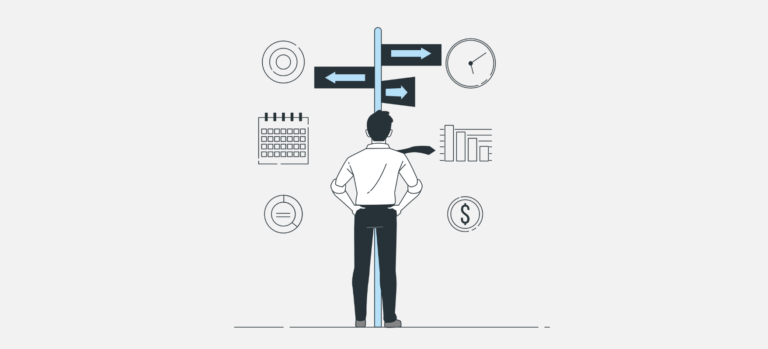What is early retirement?
In Switzerland, it is possible to retire before the normal retirement age (65 for men, 64 for women until the AHV21 reform is fully implemented). However, leaving working life early also means giving up several years' income, with significant consequences for your AHV pension, BVG benefits and personal finances.
Successful early retirement cannot be improvised. It requires solid preparation in terms of occupational and private pension provision, a detailed analysis of future needs, and appropriate tax strategies.
Harmonization of retirement ages
The AVS 21 reform sets the reference retirement age at 65 for everyone. For women in the transitional generation (born between 1961 and 1969) who do not opt for early retirement, a lifetime pension supplement is planned.
What is early retirement in Switzerland?
Early retirement refers to the option of stopping professional activity before the legally established reference age for the AVS and occupational pension schemes. In Switzerland, the three pillars of the pension system each have their own conditions:
- AVS (1st pillar): early retirement is possible from the age of 63 (men) or 62 (women), with a reduction in pension ranging from 6.8 % to 13.6 % per year of early retirement.
- BVG (2nd pillar): Most pension fund regulations allow early withdrawal from the age of 58, with a reduced pension depending on age and the fund's technical parameters.
- Tied pension provision (pillar 3a): Linked individual pension assets can be withdrawn as early as 5 years before the normal AHV retirement age, currently 60.
Calculate my retirement benefits
- You can request an estimate of your AHV pension.
- Calculate an early retirement scenario in Switzerland
Early retirement: is it a good idea?
The prospect of early retirement is a dream come true: more free time, a better quality of life, the chance to travel or engage in personal projects.
In financial terms, retiring earlier means living longer without income activity. If you retire early, you'll receive an AVS pension. decreased and your occupational pension benefits (2nd pillar) will also be lower. You'll also have to compensate for several years without a salary, while covering the costs of living, which can sometimes be higher than expected (health, leisure, unforeseen events).
Despite these challenges, early retirement remains an excellent option if it is carefully considered and thoroughly planned. By anticipating the impacts, building sufficient reserves, and optimizing your pension and tax situation, it is entirely possible to fully enjoy this new phase of life.
How much will my early retirement benefit be?
1st pillar (AHV)
You can calculate your AHV pension yourself on the basis of your average annual qualifying income, less the percentage corresponding to anticipation:
- For a departure 1 year before legal retirement age, the pension is reduced by approximately 6.8 %.
- For a departure 2 years before, the reduction can be as much as 13.6 %.
An AHV pension can be anticipated between 1 month and 2 years maximum. If you're not sure of your calculation, ask the AVS for a simulation.
AHV 2025 figures
- The maximum AHV pension is CHF 2,520 / month
- The minimum AHV pension is CHF 1,260 / months
- The maximum determining average annual income is CHF 90,720
Occupational benefits (2nd pillar)
In the 2nd pillar (LPP), early retirement is generally possible from age 58 if your pension fund’s regulations allow it. If you choose to receive a pension, its amount will depend on the accumulated capital, the applied conversion rate, and your retirement age. The younger the age, the lower the conversion rate. You can find your estimated pension amount on your pension statement.
You can also choose to withdraw the full or partial capital. The LPP allows a lump-sum withdrawal of at least one-quarter of the pension savings (for the mandatory portion). In the case of a lump-sum withdrawal, the amount is subject to capital benefits tax at a reduced rate.

Individual pension provision (3rd pillar)
If you have saved in a linked 3rd pillar (3a), you can withdraw your assets up to 5 years before the legal retirement age, i.e. from the age of 60. Please note, however, that just like a pension fund withdrawal, a 3rd pillar withdrawal is subject to capital tax at a preferential rate, but it also reduces your future reserves. In all cases, compare the 3rd pillars will help you choose the right product for your objectives.
A pillar 3b is also possible, bearing in mind that certain tax deductions apply to contributions in certain cantons (Fribourg and Geneva), and that the withdrawal of capital is tax-free (as long as the contract fulfils the provident function). A life annuity may also be envisaged, although this is taxed at a rate of 1% (excluding taxed surpluses of 70%), compared with 40% previously.
How can I fill the gaps?
When it comes to early retirement, it's rare that benefits from the AHV and occupational pension schemes are sufficient to fully maintain your standard of living. The gap between financial needs and expected pensions can be significant, especially as life expectancy lengthens. Fortunately, there are a number of strategies for anticipating and bridging this gap, provided you start early enough.
1. Pension fund purchases
One option is to make buy-ins to your pension fund. By voluntarily increasing your LPP capital, you directly boost the future pension you will receive. Buy-ins are especially attractive because they are tax-deductible: every amount contributed reduces your taxable income and allows you to achieve significant tax savings.
Of course, the amounts eligible for buy-ins are capped and depend on the gaps you've accumulated during your professional career. Ideally, these buy-ins should be planned over several years to optimize their tax efficiency.
2. Contribute to a pillar 3a
The second option is to make full use of the potential of the linked 3rd pillar, or pillar 3a. This is a private pension instrument that is particularly well-suited to early retirement. Each year, you can contribute a set amount - in 2025, the ceiling is CHF 7,258 for people affiliated to the 2nd pillar. The amounts paid in are directly deducted from your taxable income, making it a doubly effective way of saving.
The earlier you start saving in a 3rd pillar A, the greater the effect of capitalization is powerful. As you approach early retirement, these funds can be withdrawn as a lump sum, providing valuable financial leeway to offset the reduction in your pension.
3. Taking out a pillar 3b
The 3b pillar is more flexible than 3a: it has no contribution limits, and the funds remain accessible without age restrictions. However, it does not automatically offer federal tax advantages. Its taxation actually depends on how the product is structured and the canton of residence.
When a 3b contract is designed to qualify as pension provision, the capital paid out at maturity is exempt from income tax. This makes it a very attractive instrument for those planning early retirement, as it allows you to build a tax-free capital sum for retirement.
Pension criteria
The purpose of Pillar 3b retirement provision is achieved when:
- Payment is made after age 60
- The contract is taken out before age 66
- Contract duration is 5 years (10 if linked to funds)
If the 3b takes the form of a life annuity funded by a single premium, taxation is different. Only a fraction of the capital converted into an annuity is subject to tax at a reduced rate. In 2025, this fraction is 4% of the annual annuity amount, compared to 40% of the theoretical income under the old rules applicable until 2024. This change makes single-premium life annuities significantly more attractive tax-wise for future retirees.
Finally, it’s important to highlight that in certain Swiss cantons—particularly Geneva and Fribourg—contributions to a 3rd pillar B are tax-deductible up to a specified limit.
4. Investment in securities
For those wishing to build up an additional financial reserve for early retirement, investing in securities represents an attractive solution.
From a tax perspective, capital gains realized on securities held in a private account are exempt from income tax in Switzerland. This means that if you sell your stocks or funds at a profit, you won’t pay tax on that gain as long as you are considered a private investor and not a professional. However, your portfolio is subject to wealth tax, calculated on the net value of the securities held at the end of the year.
Thus, investing in securities fits harmoniously into an overall financial plan alongside traditional pension solutions. However, it’s important to start early, as investing in stocks is beneficial primarily over a long-term horizon.
5. Pillar 3a redemption (from 2026)
Starting in 2026 (for the 2025 tax year), it will be possible to retroactively buy back up to ten years of missed contributions to pillar 3a, at a rate of CHF 7,258 per year in addition to the regular contribution.
To be eligible for this purchase, you must have received income subject to AHV during the year in question, and have already paid the maximum contribution at the time of purchase. The amounts bought back are fully deductible from your taxable income.
Frequently asked questions
If you stop all gainful activity before the normal retirement age, you are still required to contribute to the AVS as a person without gainful employment. The minimum amount is about CHF 530 per year (in 2025), but it can be much higher depending on your assets and replacement income.
Contributions to AHV, IV and EO are calculated on the basis of assets and annual pension income multiplied by 20.
No, once you leave your job, you also stop contributing to the 2nd pillar. Your capital is transferred to a vested benefits account or policy. It no longer generates new retirement benefits, but remains invested according to the conditions of the chosen institution. Some vested benefits foundations allow you to optimize this capital until you reach ordinary retirement age.
If you are 58 years or older and have been laid off, you can remain affiliated with your current pension fund. You will continue to benefit from death and disability coverage while continuing to make contributions.
Even with early retirement, health insurance remains mandatory in Switzerland. If you leave your employer, you lose LAA coverage (accident insurance) and will need to take out accident insurance on your own. Be sure to carefully compare coverage levels as well as supplementary insurances.
Yes, from the age of 58. If you permanently stop your gainful activity and do not take up salaried employment again, you can request the payment of your vested benefits before retirement age. This withdrawal is subject to a separate, reduced taxation rate, calculated according to your canton of residence.
Once the funds have been withdrawn, you take sole responsibility for managing your capital to cover your needs until you reach AHV retirement age.
The main risk is depleting your capital prematurely, especially if your expenses are underestimated or expected returns don’t materialize. Poor forecasting of fixed costs (health insurance, taxes, housing) or future needs (healthcare, unexpected family events) can undermine your financial independence. Careful planning, made several years in advance, is essential to minimize these risks.





